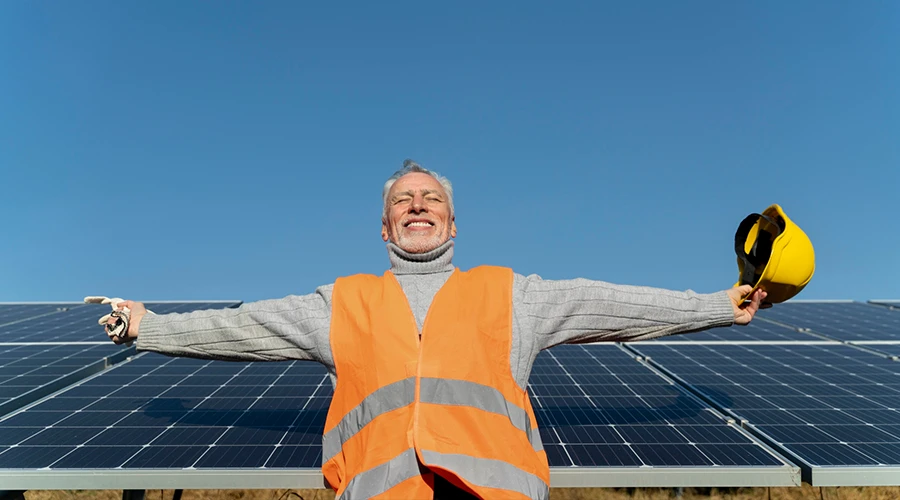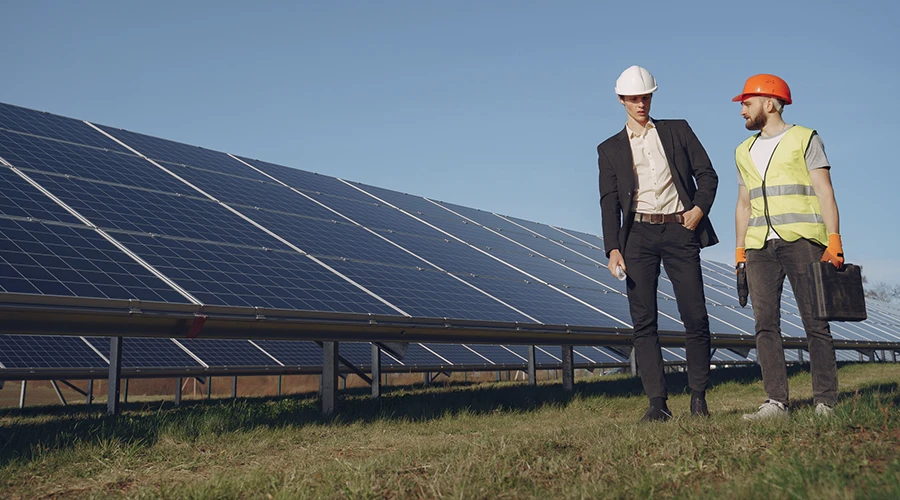Like millions around Australia, you’ve jumped on the solar energy bandwagon (or you want to). The lure of being even partially energy-independent, burning less fossil fuel and using the energy from the sun, is irresistible and rapidly becoming a preferred choice for many households and businesses. But how do dust, dirt, and tilt angle affect solar pv panel performance? In this article, we will explore the dust, dirt and angle impact on solar panel efficiency and how tilt angles can optimise pv performance, whether it’s for grid-connected or off-grid systems.
Understanding Solar Panel Efficiency
Solar panels convert sunlight into electricity, and their efficiency is measured by the amount of solar radiation they can convert into usable energy. The average solar panel efficiency is over 20%, but performance of pv can be affected by environmental factors, particularly dust deposition. But by how much? Let’s see. I’ve taken a look at scientific studies, and looked at stats of customers and my own solar systems and the results are very interesting.
The Effect of Dust on Solar Panels
Dust accumulation on solar panels leads to a phenomenon known as soiling, which can severely decrease solar power generation. Even a thin layer of dust can block sunlight, reducing the solar panel efficiency by up to 76% in some cases. For example, research indicates that dust can cause energy losses of approximately 7% annually in the U.S. (But hey, this is Australia!) This translates to substantial financial losses in utility-scale solar farms, where even a 1% reduction in power output can lead to $200,000 in lost revenue annually. But does it make a significant difference for your home? Well, that’s debatable.
It’s Not Just About the Dust
The truth is it’s not just about the dust or soiling. It’s about how easily the dust can be cleared from the panels. It’s no surprise that the flatter a panel, the more the dust entrenches itself. It stands to reason that a tilted panel, plus a little rain, and the dust can at least be partially rinsed off… so let’s dive in a little more.
How Dust Affects Solar Panel Performance
- Soiling: Dust, dirt, and other debris accumulate on solar panels, obstruct sunlight, and lead to a drop in energy production. This is particularly problematic for panels installed horizontally or at very low tilt angles, where dust tends to settle and adhere more easily.
- Environmental Factors: In dry, dusty environments, such as deserts, the impact of dust can be exacerbated by the lack of rainfall. Heavy dust storms can lead to severe soiling, further reducing solar power output.
The Role of Tilt Angle on Solar Panel Performance
The tilt angle of solar panels is another critical factor that influences their efficiency. Panels that are tilted at an optimal angle can enhance their exposure to sunlight and minimize the accumulation of dust. The good news is that regular tilt angles of regular pitched rooves in Australia gives you a great scenario right off the bat.
Optimal Tilt Angles for Solar Panel Efficiency
Research suggests that the ideal tilt angle for solar panels typically corresponds to the geographical latitude of the installation site. For example, in regions closer to the equator, a lower tilt angle may be sufficient, while those in higher latitudes might benefit from steeper angles.
- Performance Analysis: Studies conducted in desert environments show that panels tilted at 25° perform best due to a balance between dust accumulation and sunlight capture. In contrast, flat panels (0° tilt) experienced significant performance drops, with reductions in power output reaching 80.4% after prolonged periods without rain.
- The Sunshine Coast: So, guess what? The latitude on the Sunny Coast is about… drumroll… 25 degrees (give or take). Which means degradation of efficiency may actually be slowed if dirt plays a part!
Dust Accumulation and Tilt Angle
Tilt angles also influence how dust particles accumulate on panel surfaces:
- Flat Panels (0°): These tend to accumulate dust more readily, as it creates a layer that can harden and cement over time due to moisture.
- Moderate Tilt (25°-45°): Panels at these angles allow dust to slide off more easily, which reduces the impact of soiling and improves overall solar panel efficiency. (Take note Sunshine Coasters!)
- Steep Angles (60° and above): While these can help reduce dust accumulation, they may also create shading issues between adjacent panels, which can negatively impact power output.
Solar Panel Cleaning and Maintenance Strategies
To maintain optimal solar pv efficiency, regular cleaning and maintenance should be considered:
- Panel Cleaning: Get in touch with your installer and see if they provide a cleaning service. We will book you in for a regular cleaning schedule, to upkeep the maintenance of your system and remove the dust. This is especially important in dust-prone areas. Generally we use water for cleaning because it is effective; however, advanced techniques like electrostatic cleaning can also be explored especially for severe problems.
- Natural Cleaning Solutions: Rain can assist in cleaning panels, but in dry regions, proactive maintenance is necessary to prevent excessive dust build-up. Here on the Sunny Coast, we’re blessed with enough rain that in most cases, panels are self-cleansed to a large degree (sorry about the panel tilt pun!).
Innovative Cleaning Technologies
Emerging technologies, such as robotic cleaners and automated dust removal systems, can significantly reduce maintenance costs while ensuring panels remain clean and efficient.
Get a Professional to Clean to Reduce Personal Danger
Just a quick note: It’s best to ask a professional to clean your panel system because of the electrical danger posed. Think safety!
Maximizing Solar Panel Efficiency: Addressing Dust, Tilt, and Efficiency
So, there you have it. Now you’ve got a deeper understanding of the impact due to dust, dirt, and panel angle on solar panel output. If you want to maximise solar cell energy production then maintenance is key. And that means keeping an eye on the cleanliness of your panels and taking into account their angle. The flatter the panel (and that is particularly less than 20 degrees) the more you need to attend to having your panels professionally cleaned. By maintaining optimal angles and implementing effective cleaning strategies, you can significantly improve solar panel efficiency and mitigate the adverse effects of dust accumulation.
If you’re considering solar energy solutions for your home or business, contact Swift Solar and Electrical today on 0422 251 734 for personalised advice. We’d love to help you harness the power of the sun effectively, and ensure your solar panels operate at peak performance year-round.



